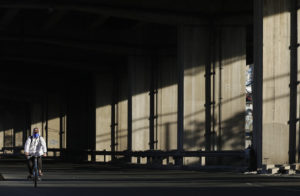
Researchers have found that the average number of meetings a person attends per day is up 12.9%. Image: Anchiy / IStock.com
As Facebook, Twitter and Zillow are developing plans to let employees work remotely forever, many other companies are changing their office routines to adapt to the new reality of telecommuting.
While workers around the world are still adjusting to the dynamics of virtual business meetings, new data suggests that the length of the average meeting is down by 20% since the onset of COVID-19.
The study, conducted by the National Bureau of Economic Research, draws from aggregated metadata on emails and meetings from more than 3 million users in North America, Europe and the Middle East, both 8 weeks before and 8 weeks after government-mandated lockdowns.
Although researchers have found that the average number of meetings a person attends per day is up 12.9%, they have noticed that people spend less time in meetings per day in the post-lockdown period (-11.5%).
“With everyone working at home, however, short meetings could serve to quickly communicate new plans, share work that has been accomplished, increase accountability, calibrate priorities, provide social support, and achieve other purposes that are often handled informally in office settings,” the authors suggest.
Meanwhile, the mass shift to telework has led to an increase of the length of the average workday (+ 50 minutes).
Researchers suggest that this longer workday span may be linked to an “overall pattern of more meetings and more emails” as well as “a spillover of virtual communication beyond normal working hours.”
“On the other hand, the change in work schedule may be a consequence of a blurred distinction between work and personal life, in which it becomes easy to overwork due to the lack of clear delineation between the office and home,” they added. NVG
RELATED STORIES:
Google to give $1,000 to employees for work-from-home office needs
Facebook’s remote workers of the future could work in AR-powered virtual offices


